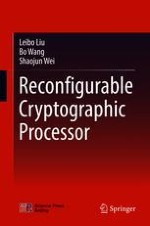2018 | OriginalPaper | Buchkapitel
6. Physical Attack Countermeasures for Reconfigurable Cryptographic Processors
verfasst von : Leibo Liu, Bo Wang, Shaojun Wei
Erschienen in: Reconfigurable Cryptographic Processor
Verlag: Springer Singapore
Aktivieren Sie unsere intelligente Suche, um passende Fachinhalte oder Patente zu finden.
Wählen Sie Textabschnitte aus um mit Künstlicher Intelligenz passenden Patente zu finden. powered by
Markieren Sie Textabschnitte, um KI-gestützt weitere passende Inhalte zu finden. powered by
